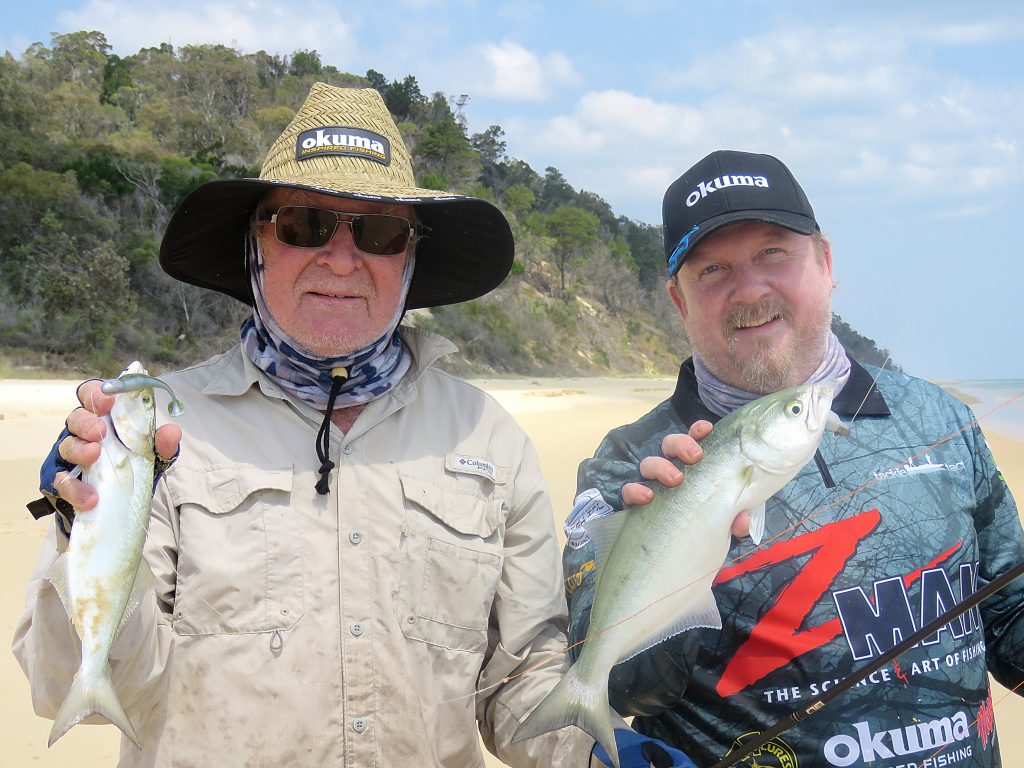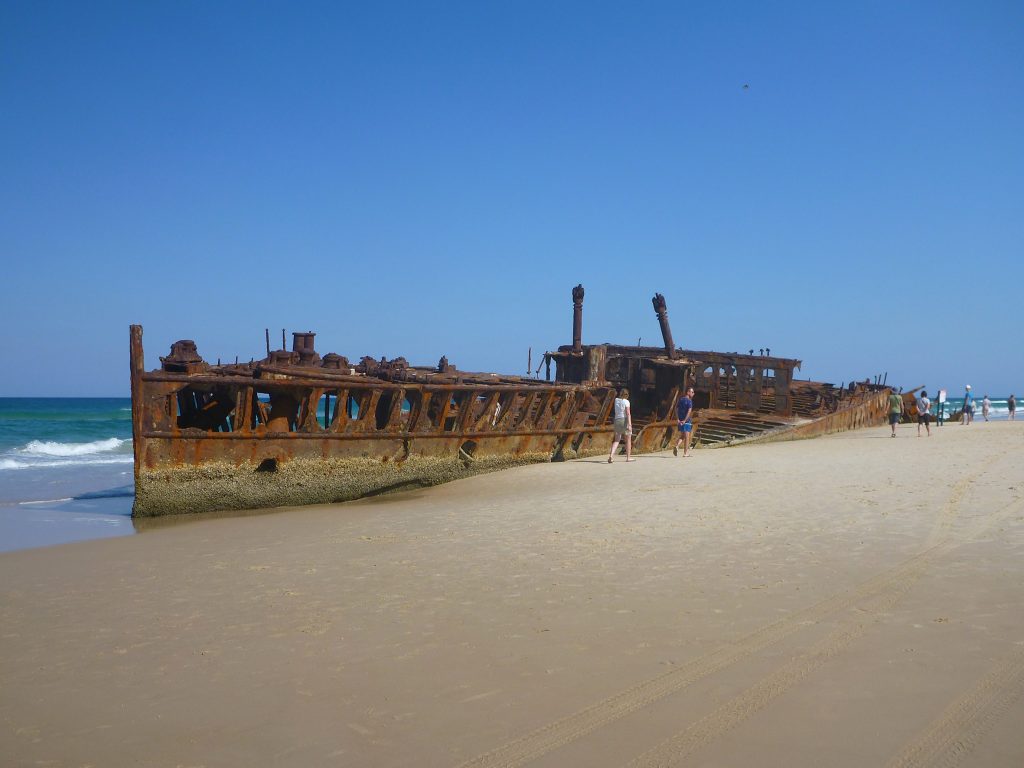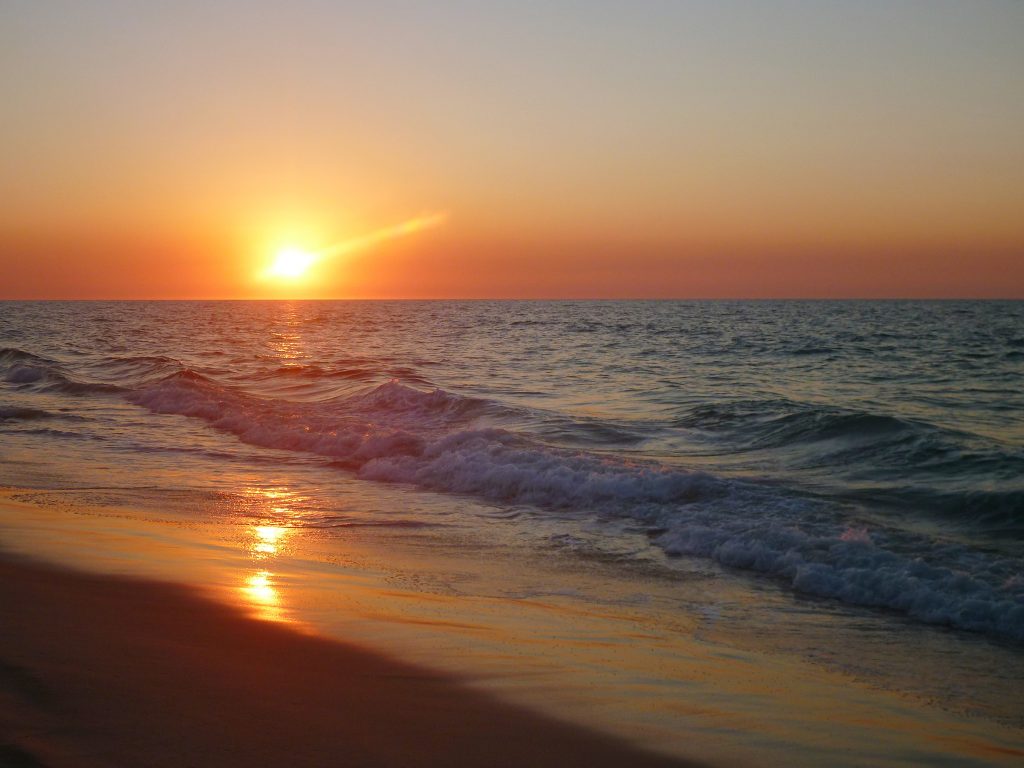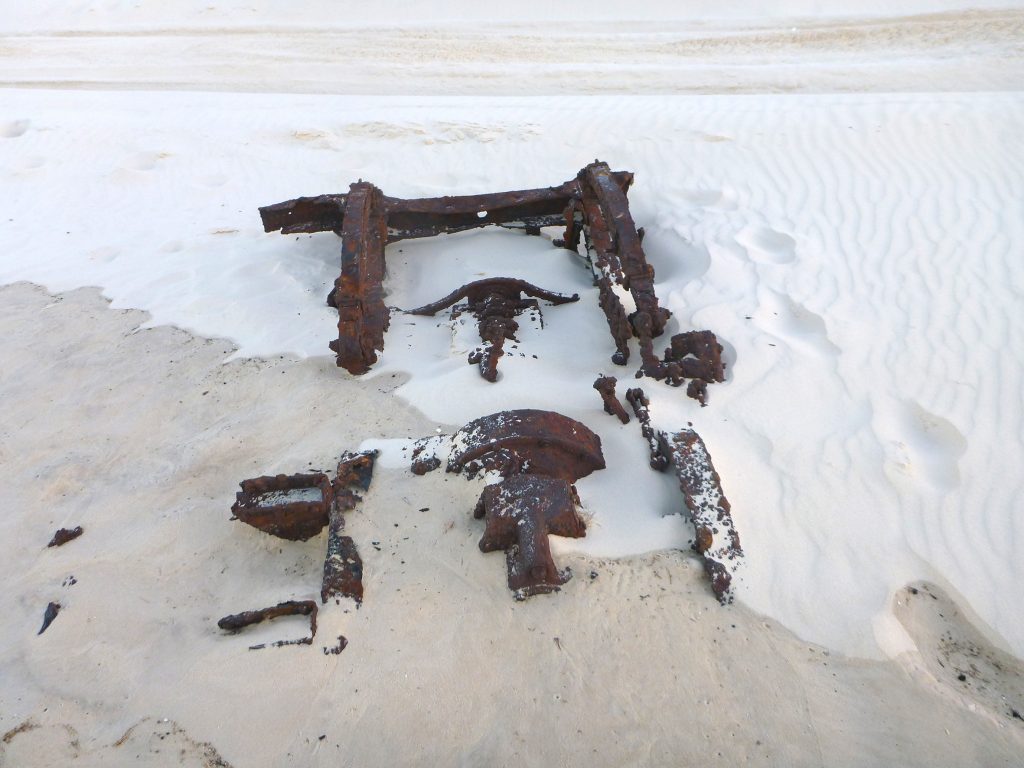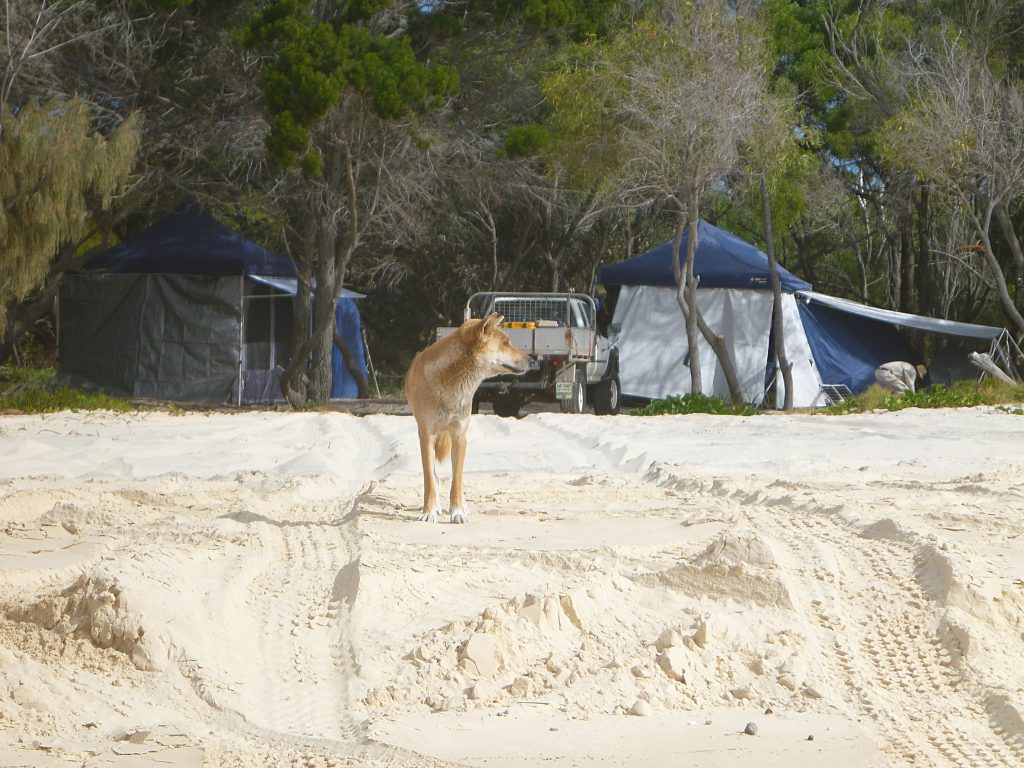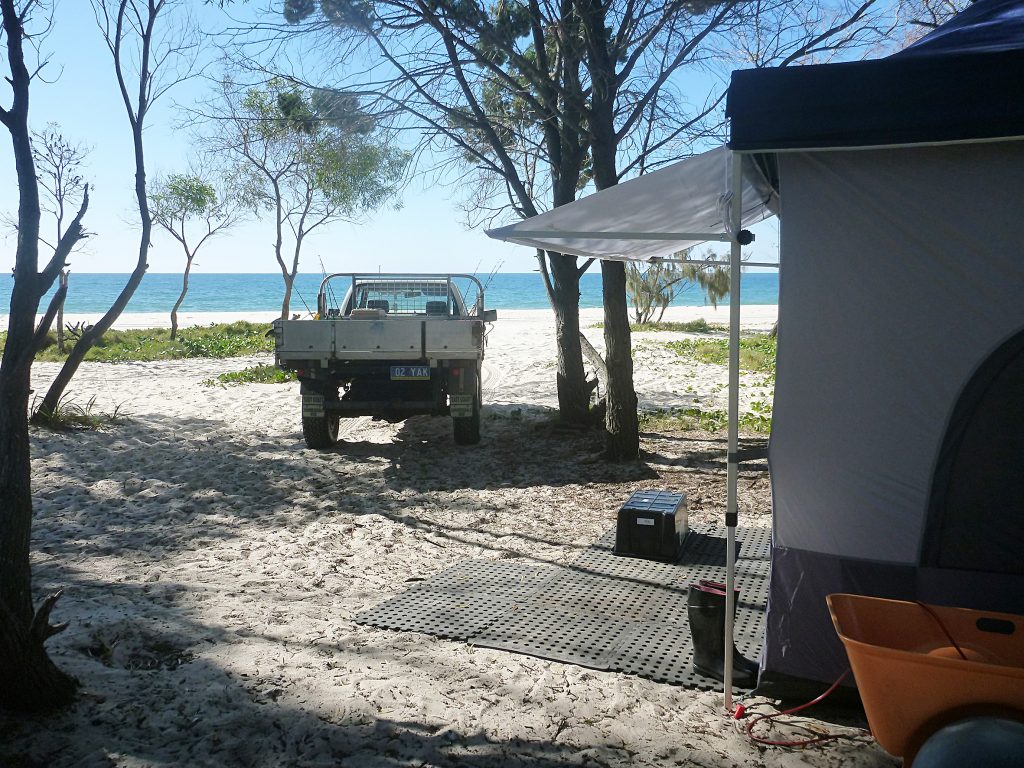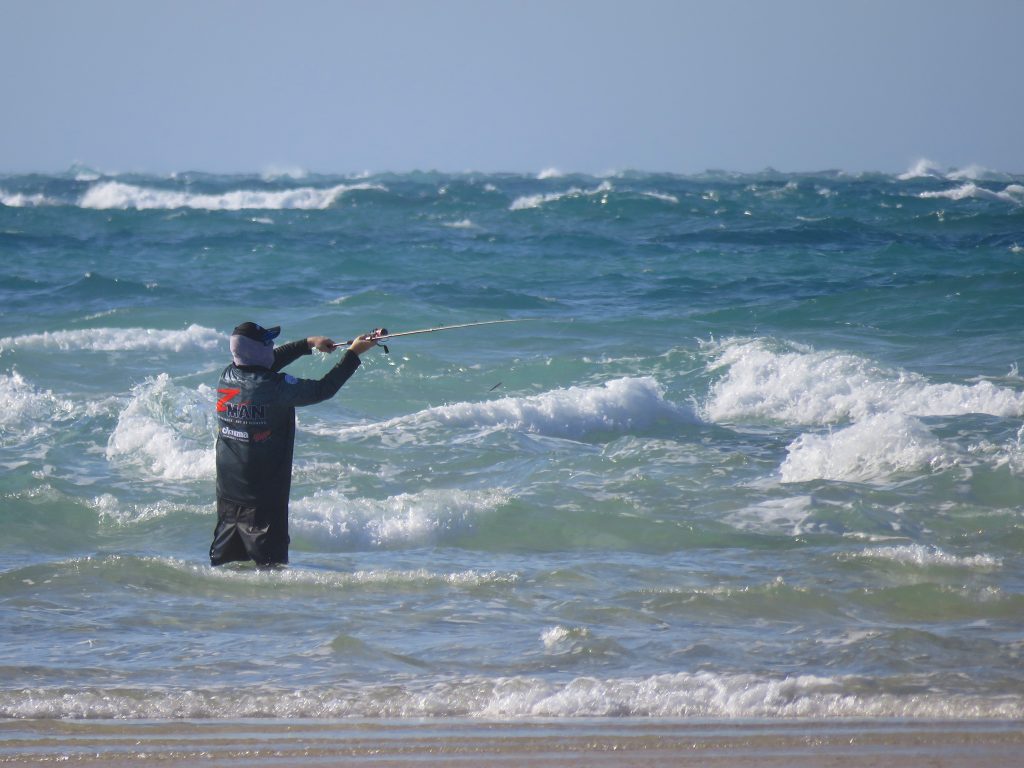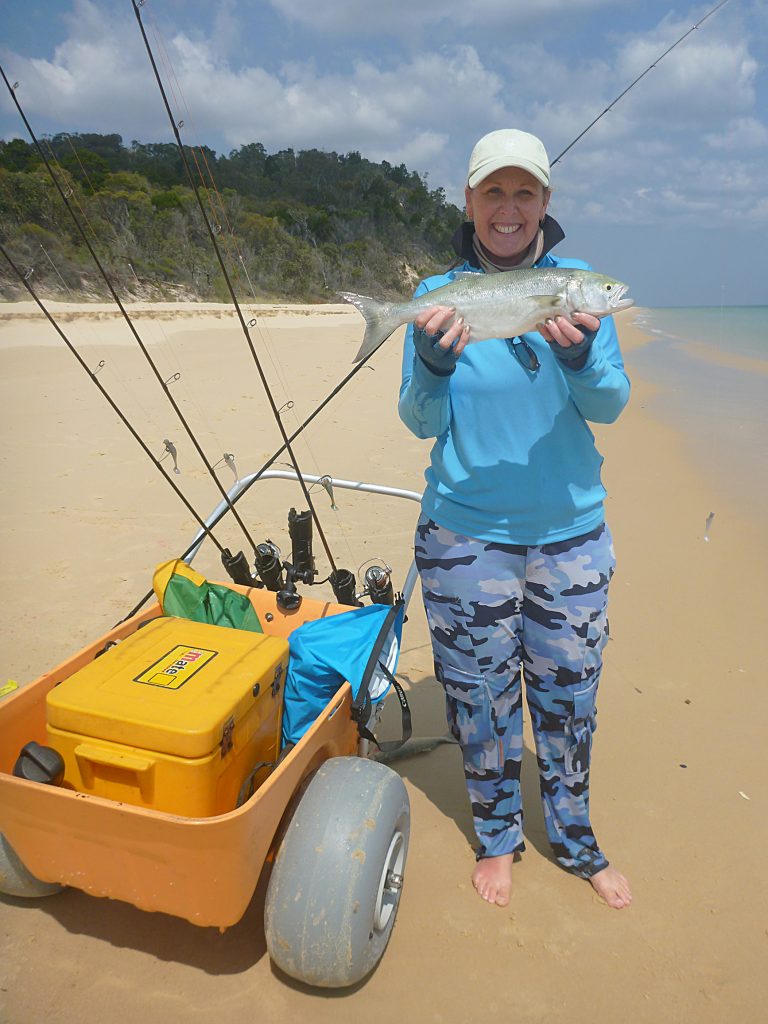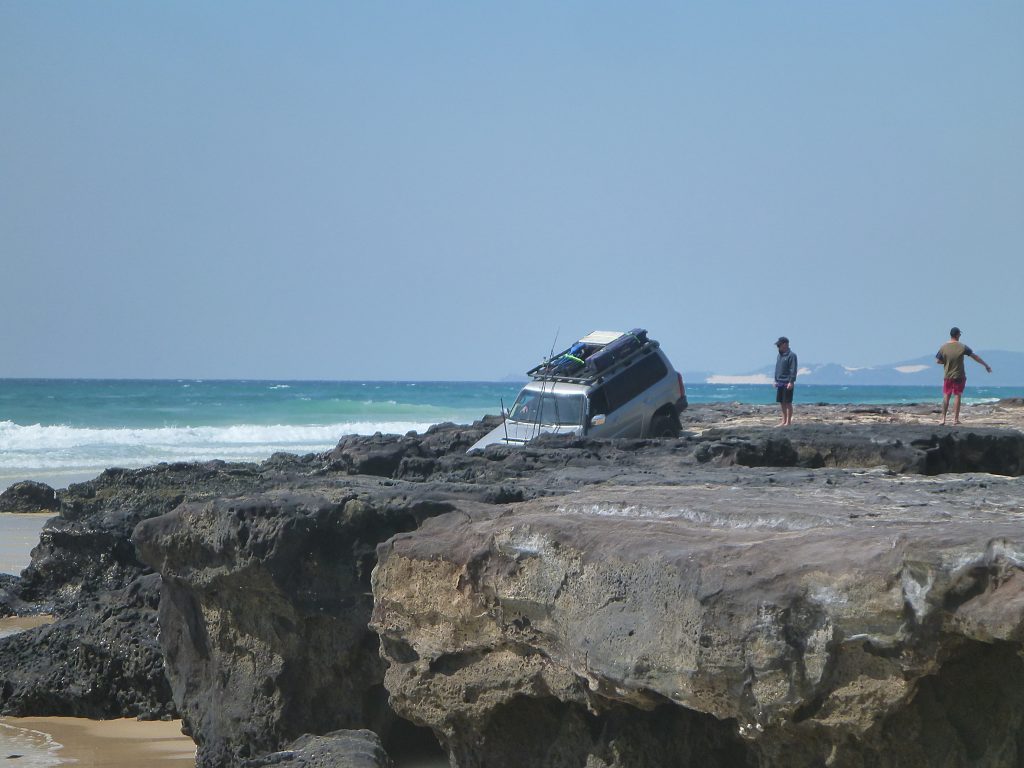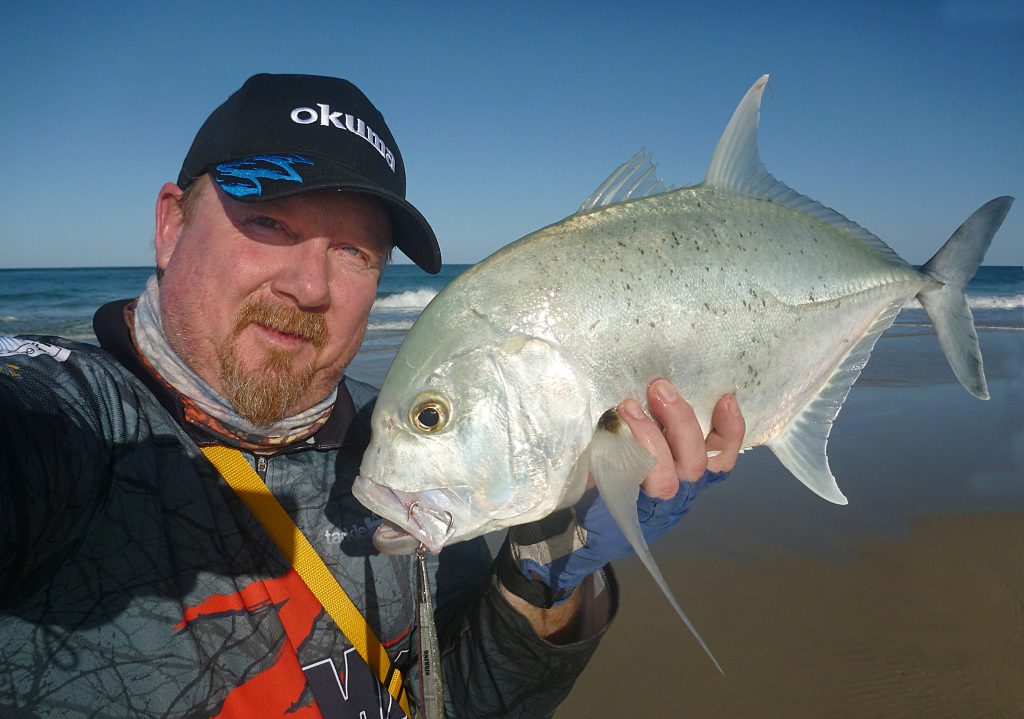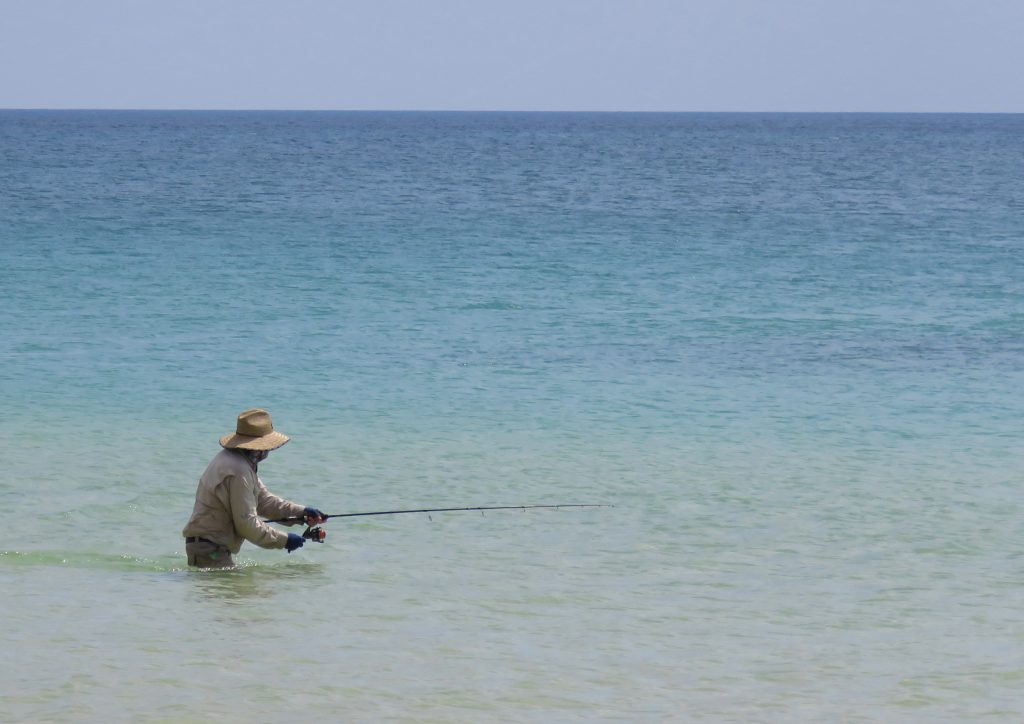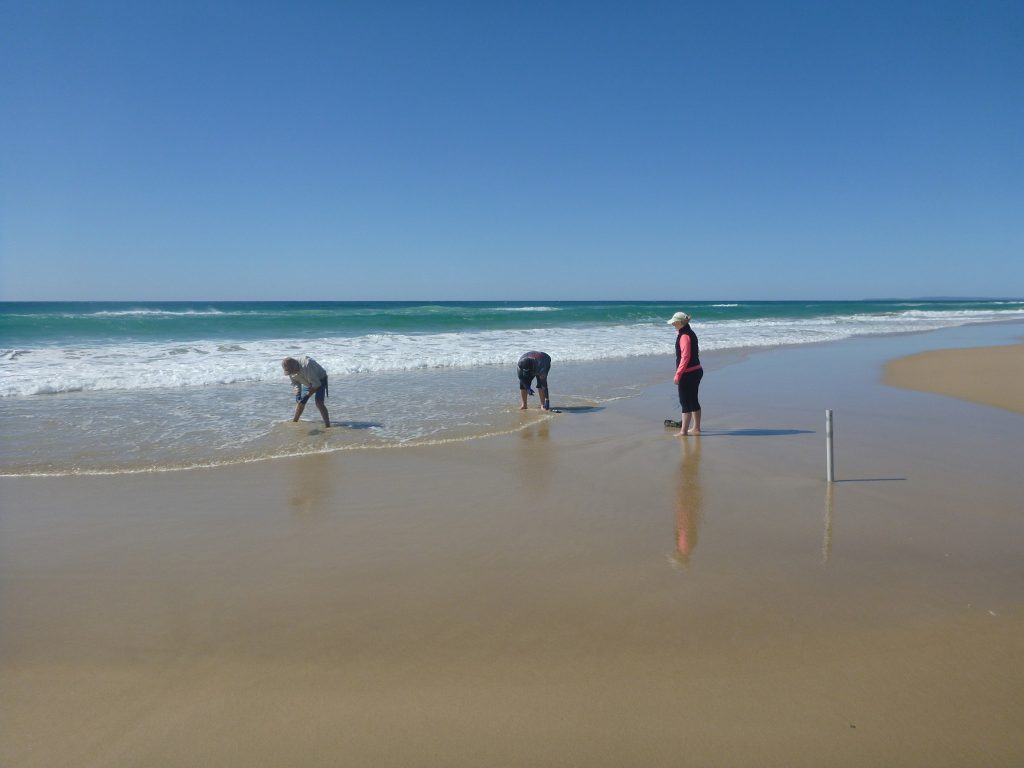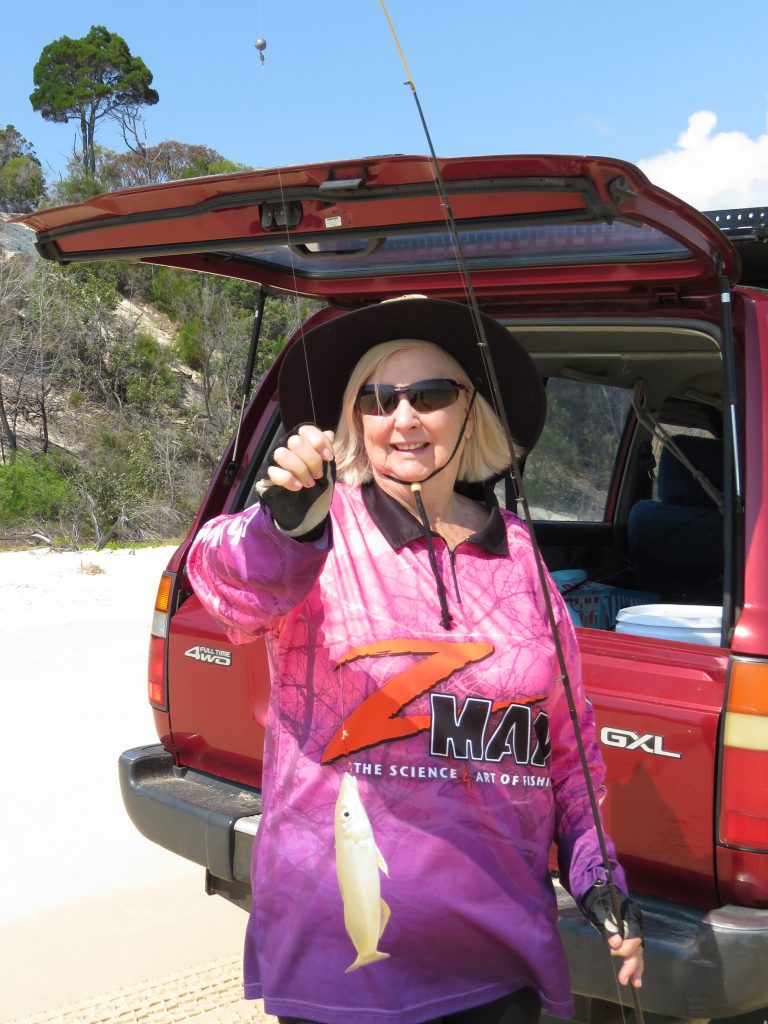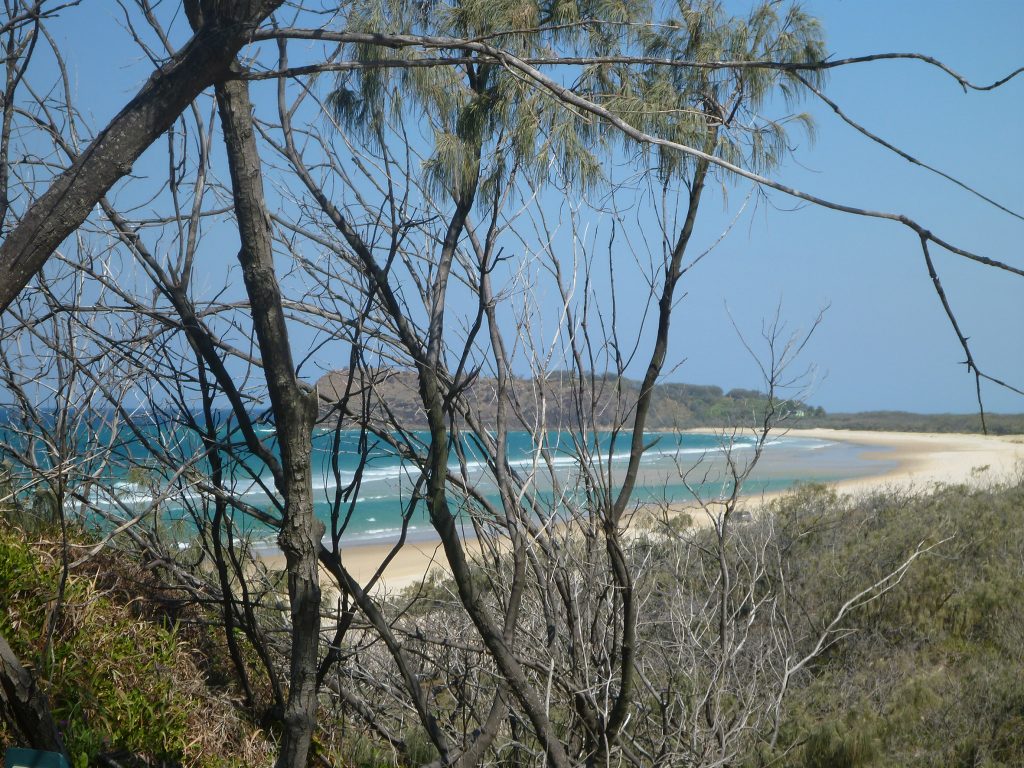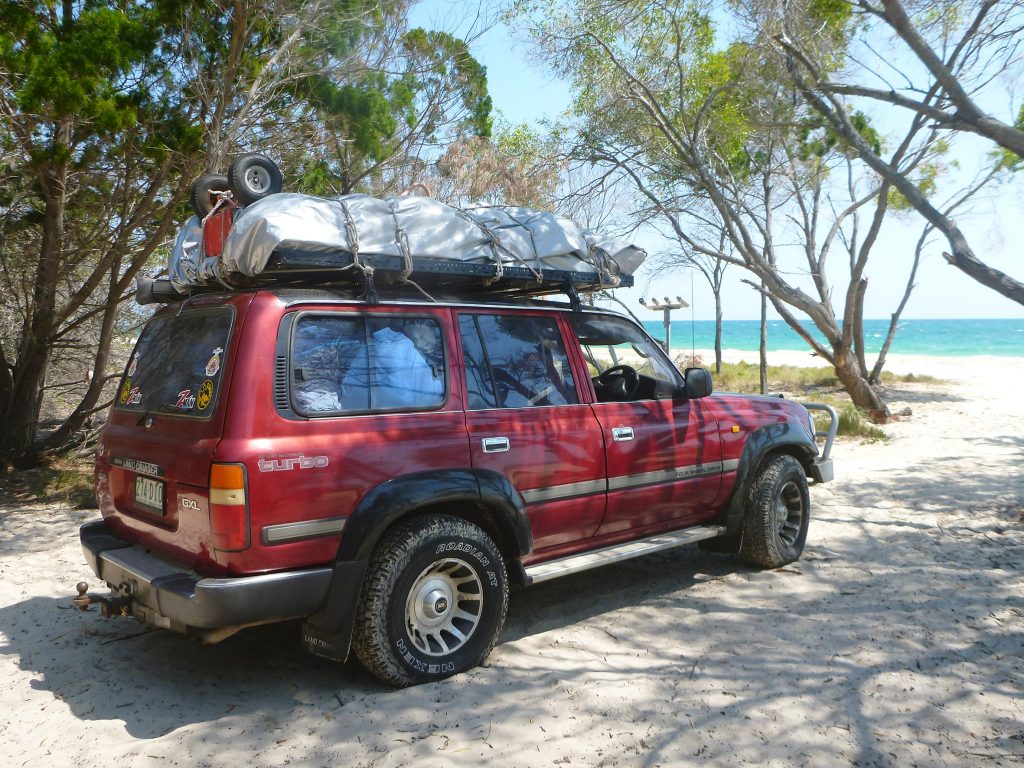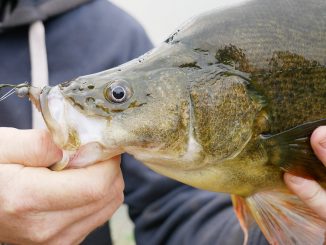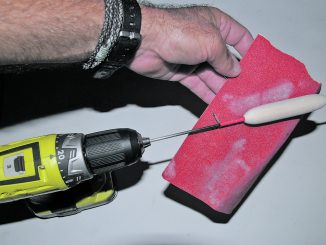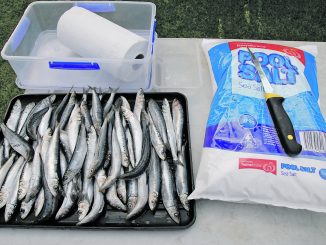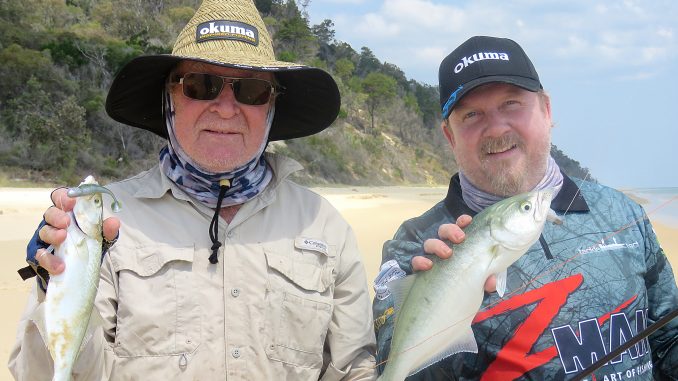
by Justin Willmer •
Whether you call it ‘Fraser Island’, ‘K’gari’ or simply ‘paradise’, this natural wonder draws tourists and anglers from around the world, visiting both the island itself and the fishing Mecca that is Hervey Bay and the Great Sandy Straits. Hervey Bay is just one of the popular mainland fishing destinations inside Fraser Island, which is the largest sand island in the world – over 120km long.
Heritage listed Fraser Island is located approximately 250km north of Brisbane. It’s accessible by vehicle barge from River Heads (east of Maryborough) to Kingfisher Bay and Wanggoolba Creek, or alternatively via Inskip Point, 15 minutes drive from Rainbow Beach at the southern end.
Driving on the island consists of beach and sand tracks that are recommended for experienced 4×4 drivers only. There are also many tours that operate on the island, including 4WD buses and light aircraft. Accommodation is a mix of camping, rental houses and units, and quality resorts.
Ecotourism is a massive drawcard, with natural wonders that include Lake McKenzie with its clear blue water and white sands, along with many other lakes; the 72 different coloured sands that make up The Cathedrals, The Pinnacles, Rainbow Gorge and Red Canyon; and the crystal-clear waters of Eli Creek. The many other visitor highlights include the Champagne Pools, Indian Head, Waddy Point, Wathumba Creek, miles of beaches and walking tracks. Fraser Island is the only place in the world where tall rainforests grow on sand dunes… it really is a spectacular location.
My family and I have been visiting Fraser Island for over 30 years, and I am a little ashamed to say that I have seen very few of these visitor hotspots up close. I enjoy the spectacular natural beauty of the island, however it’s the fishing that is the primary focus of my visit. I’m sure the serenity, beauty and remoteness of many sections of the island are an important component of my overall experience, because although I can catch fish in many other places, Fraser Island keeps drawing me back.
The fishing on offer includes sheltered beach fishing on the western side of the island, along with a few creeks, more exposed surf fishing on the eastern beaches, and rock fishing from a selection of headlands and coffee rock outcrops. For the keen and more experienced boat operators, you can cartop tinnies or tow larger boats up the island, launching through the surf to target reef and pelagic species. We launched tinnies from Sandy Cape on the northern tip for many years, but these days we prefer to focus on the safety and simplicity of beach fishing.
For many visitors, the main attraction is the annual run of tailor. These fish school in large numbers during the winter months. For other anglers it’s the whiting and swallowtail dart fishing that keep them coming back.
For me it’s the multitude of other species that can be encountered, including multiple trevally species, queenfish, mackerel, tuna, kingfish and more. As is often the case, if there are schools of bait around they will attract other species, such as tailor, that in turn attract top level predatory species.
Let’s have a look at a few of the main target species that are available, and discuss how you can target them on your adventures.
Whiting
An excellent table fish and a species that pulls hard on light gear, whiting can be caught virtually anywhere around the island. These fish favour smaller gutters where they can escape larger predators, and are often caught from deeper holes at the ends of these gutters.
Freshly caught beach worms are the go-to bait, so check out the ‘how to catch beach worms’ videos on You Tube so that you’re ready for action. When it comes to catching beach worms, you should select the bottom half of a dropping tide, and look for an area where the water washes up over a large area and then falls back into the gutter. This will give you time to spot the tell-tale ‘V’ in the receding water, created by the worm’s head as it looks for food. Get your ‘stink bag’ of fish frames washing in the water to attract them, and try to keep your footsteps light as you move around on the sand. Worms are more wary and harder to catch when you’re stomping around, or when there are large numbers of people. I often tie a fish frame around my ankle and move away from the crowds. Windy conditions make worms harder to catch, too.
Pipi is the best bait for catching worms as it is nice and firm, making it difficult for the worms to pull pieces off, encouraging them to grip on firmly. As they grab the pipi, slide your fingers in to replace the sand being washed away by the wave. You will feel your fingers replace the sand around the worm, most importantly below the sensitive white section of the head. Once you are holding the worm gently, as the sand would, you will feel it push up through your fingers ready to pull the bait back down into the sand. As the worm ‘arches up’, you should push up, simply squeeze them tighter and keep the momentum going to pull them out of the sand. If you miss the timing, the worm will lock all of its little leg like fibres down its body into the sand, and you won’t be able to pull it out.
Other popular baits for whiting include pipis gathered on the beaches, along with squid and saltwater yabbies brought from the mainland.
In terms of rigging for whiting, we fish 7’-10’ rods, depending on the size of the surf being fished, loaded with 8-10lb monofilament line, with a running 2-4 ball sinker, small black rolling swivel, 30-50cm of 8-10lb mono trace, an inch of red plastic tube and a #4 Mustad Bloodworm longshank hook. Once cast, we slowly retrieve the bait so that we can stay in contact with it and wait for the bites of a whiting – hopefully that slow, sucking weight that is often the calling card of a larger whiting – and then set the hook.
Handy accessories when you are beach fishing include a wading bag for carrying your fish, a ruler, small tackle tray of basic terminal tackle, and a belt with a bait bucket for carrying your beach worms or other bait. If you are using beach worms, keep a couple in your bait bucket and the remainder in a bucket of water, changing the water a couple of times a day and keeping it in the shade.
Finally, always remember to check your local rules and regulations on both bait and fish species landed.
Swallowtail Dart
You should keep an eye out when you’re fishing the surf gutters as dart can often be spotted surfing in the waves. Dart are another hard-pulling fish on light gear and they are a reasonable quality eating fish if they’re bled immediately on capture and iced down. Like tailor, they smoke well too, so it may be worth including a fish smoker with your gear.
Better quality dart are generally found in the larger surf gutters, so we fish with light to medium rods around 9-12’, 12-15lb monofilament line, a running size 4-6 ball sinker, small black rolling swivel and a 40-50cm trace of 15-20lb mono, finished off with a slightly larger Mustad Bloodworm longshank hook than we use for the whiting, or alternatively a Mustad Long Baitholder hook, because the small bait holder barbs on the shank of the hook are ideal for securing softer baits such as pipis.
Pipis are my go-to bait for dart, and these can be gathered on the lower stages of the tide, along the water’s edge. Vehicle traffic along the beach can reveal their location, as each pipi creates a small lump protruding from the sand. Dig down below the lump, often a few inches, and you will find the pipi. Another way to find pipis is to head to the water and bury your feet into the sand, moving your hips and doing ‘the pipi shuffle’ twist, to locate pipis in the sand.
When it comes to opening pipis, I always warn people away from using knives because Fraser Island is remote and we don’t want any slips that could cause serious injury. Simply hold a pipi in each hand and bang them together to open them, or use the tow ball on your vehicle to open the last one.
Thread the hook through the pipi multiple times to create a neat ball. Try to avoid strands hanging from the bait, as fish will tend to bite and drag on these, making a mess of the bait and missing the hook.
Other effective baits for dart include beach worms, squid and small pieces of fish flesh, such as mullet, gar, bonito or pilchard. Dart will also take lures, with small 10-15g metal slugs doing the job when they are fired up. Replacing your bait with a 2.5” curl-tail plastic can also be effective; keep the sinker, swivel and trace and then attach a 1/8oz jighead in place of the hook to keel the plastic on the retrieve and stop it spinning. My go-to plastic for this technique is a ZMan 2.5” GrubZ in chartreuse sparkle colour.
Tailor
The main target for many anglers, tailor can turn up anywhere along the beach, however a large surf gutter with an entry and exit point is a solid starting option to begin your search. Tailor numbers increase throughout the cooler half of the year, peaking around August-September. Areas such as the wreck of the Maheno, Cathedral Beach, Indian Head, Waddy Point and Ngkala Rocks are popular starting points, and they are all marked on the map that comes with your camping and vehicle landing permits.
When we are specifically chasing tailor, we step up to 12’-13’6” medium/heavy rods and 20-30lb monofilament line, rigged with a running 6-10 ball sinker, black rolling swivel, 50-70cm of 40-60lb leader and a gang of four hooks to suit the size of the pilchards that we are fishing, generally 3/0, 4/0 or 5/0 hooks. These gang hooks ensure that there is hook coverage the full length of the pilchard, which is important because tailor are aggressive and messy feeders that will often destroy a pilchard and miss the hooks. Gang hooks also reduce the chance of a bite-off from the tailor’s razor-sharp teeth. Gangs can be purchased pre-made, or you can purchase bulk hooks and make your own.
When fishing for tailor you will sometimes see the school of fish in the waves, appearing as a grey or black patch. Quality polarised sunglasses are your best fishing tool on the beach, cutting glare to assist you when locating cruising and schooling fish, bait and changes in bottom structure, while also protecting your eyes from objects and the elements.
It’s been over 10 years since I’ve cast a pilchard on a gang rig for a tailor though, with lures proving an economical, stink-free, simple and effective option. My go-to lures for tailor consist of metal slugs, stickbaits and soft plastics. Metal slugs come in a variety of shapes, sizes and weights, and the most effective for our crew are ones with silver finishes with a black, blue or green back. We use 7’ 3-6kg and 5-12kg spin rods and 2500-4000 size spinning reels spooled with 10-15lb braid and 40lb leader for casting 20, 30 and 40g slugs, stepping up to 10-13’6” surf rods and 6000-8000 size reels loaded with 20lb braid and 40-80lb leader for casting 60-85g slugs in heavy surf. Most of the time we can get away with the smaller rods, which is a much more fun way to fish, and an awesome challenge when a trevally or queenfish eats your 20g slug.
More recently the Fish Inc. Flanker 85mm and 115mm sinking stickbaits have also proven themselves on the tailor, trevally, queenfish, tuna and more, when cast long and retrieved at speed. Plastics have dominated for us though in recent years. As Fraser Island gets busier, there are more people driving the beaches and harassing the tailor schools, who in turn are being harassed by other predators such as queenfish, mackerel and trevally, and there’s no doubt that at times it can be tougher to get the school to bite. So switch from a slug to a plastic and fish on! I have stood side-by-side with anglers throwing slugs as we follow a patch of tailor along the beach, and I’ve landed 10 fish to their one… if they can get the tailor to eat the slug at all.
My go-to plastic at the moment is a ZMan 3” MinnowZ in a natural baitfish colour, rigged on a TT Lures HeadlockZ HD jighead in 1/2oz 3/0, or 3/4oz 5/0 when more distance is required. There are a few techniques that will see you catch more fish.
1. Try to work out in which direction the school is moving, and make your casts in front of the school, as this often produces more aggressive strikes and larger fish. Casting to the middle can break up the school or spook them, while casting to the tail of the school can spook them and speed them up, making them harder to chase down the beach effectively.
2. If they stop biting, mix up your retrieves. We have followed a school along the beach, switching from a slow roll (slow wind) to a burn-and-kill (wind and pause), then a hopping or shaking retrieve, and repeated the process. This approach has kept them biting until we’ve caught as many as we’ve wanted to catch, or the school has been chased by the slug casters or a larger predator.
3. The retrieve that worked most effectively for me on our recent trip was to cast to the school and then retrieve as if I didn’t want the fish to eat it. An aggressive rip, wind and pause, rip, wind and pause. It makes sense because the baitfish (plastic) doesn’t want to be eaten, and the best way I could describe it to my fellow fishos is to rip it away from the tailor like you don’t want them to eat it. This retrieve produced 20+ fish for multiple sessions, and we left them biting.
Other Species
The techniques used for tailor will often work on other species, however I find that I catch the other species mostly where the tailor are not schooling, or around the tailor when they are eating them! While fishing the beaches and rocks at Fraser Island I have landed longtail tuna, mackerel, queenfish, yellowtail tuna and giant trevally over a metre long, along with a mixed bag of other species.
You may not find yourself hooked up to fish like this every trip, however if you’re rigged and ready and the opportunity arises, you are in with a chance. I am always on the lookout for big fish cruising in the waves or harassing schools of tailor, whiting and other species that we are fishing for. I am also always on the lookout for bait or fish being busted up, and birds working. Quite a few of the larger fish I have caught have been spotted and cast to, or I have cast to the mayhem that they have been producing.
The other option is to put the time in and blind cast in areas that should hold big fish. I have walked the best beach gutters that I could find for hours, taking 10 steps and throwing a cast, 10 steps throwing a cast, and then finally a big queenfish would eat the slug at my feet and within seconds would be doing acrobatic leaps at the back of the gutter, before a sustained battle in the swell and sweep. When you land and photograph a fish like that, it makes all the time and effort worthwhile.
When blind casting, target the entry and exit points to gutters (where larger predators can easily duck in for a feed and head back out again), points and areas that create current breaks and eddies, rocky headlands and rocky outcrops, bait schools, and areas where birds are concentrated. I like to walk the beach following a school of bait, and it often doesn’t take long for a predator to find the bait and, in turn, your lure.
The angling options don’t end there, with bream and tarwhine often targeted around the rocky outcrops, and a multitude of other species that you may come across including mullet, gar, stargazers and many more. For the boat anglers there’s red emperor, snapper, sweetlip, red throat emperor, tuskfish, jobfish and a multitude of reef and pelagic species.
That’s just a taste of the fishing that is available on the island, with slide baiting (slider rigs) also becoming a popular technique for chasing larger species from the sand. You can find out more about this technique by clicking here or from your local tackle store.
Fraser Island is one of those truly amazing locations where the environment is breathtakingly beautiful, there is a plethora of wildlife on show, including dingos, bird life, turtles, dolphins, whales and more, there is a tourist attraction at almost every turn, excellent 4WDing and some incredible fishing on offer.
As more people discover this gem it is getting busier, and I would urge everyone visiting Fraser to respect your fellow visitors, educate yourself about the island and respect the environment, following the rules and guidelines in the booklets and brochures provided. If we look after this incredible resource, all of us will be able to enjoy continued access to the island for generations to come.
For more information on planning an adventure to Fraser Island, a great starting point is www. parks.des.qld.gov.au.
See you on the beach!

